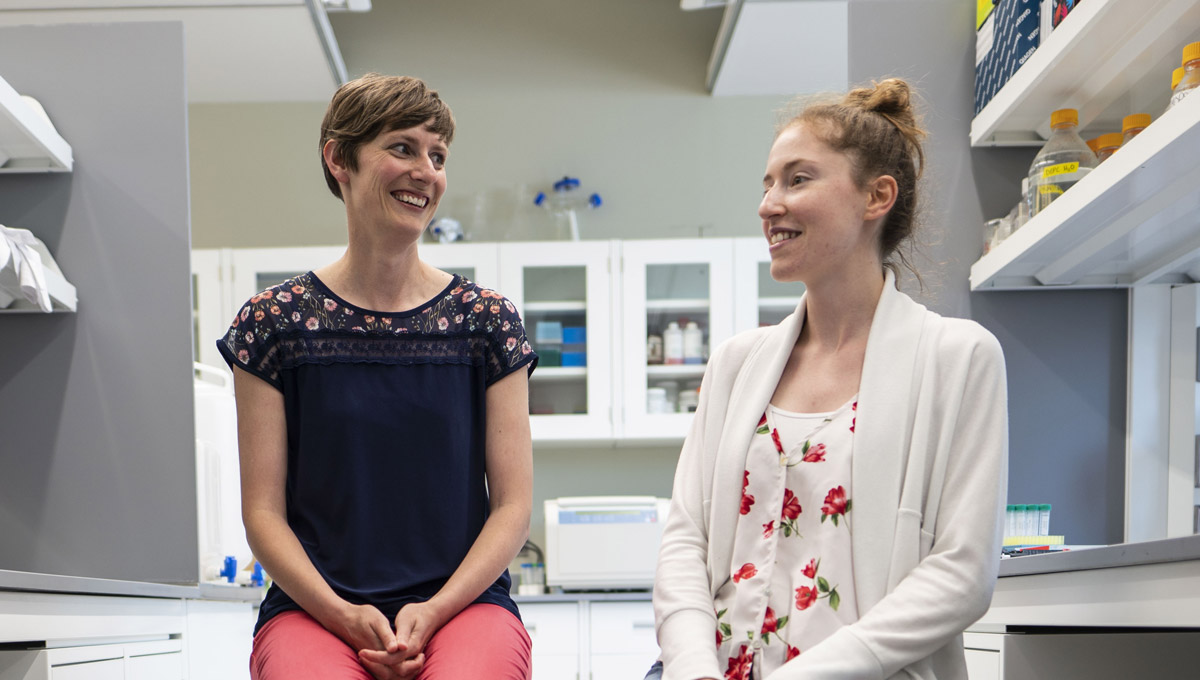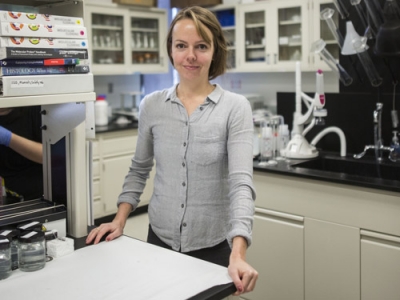By Leah Coppella
Jenny Bruin wants to better understand what environmental factors contribute to the onset and development of diabetes.
Her lab has completed a number of studies with a particular pollutant called dioxin, and in almost every study, there was an interesting outcome.
“Basically, females seem like they don’t adapt well to metabolic stress if they’ve had exposure to this pollutant and we don’t see the same thing in males,” Bruin says.
This exciting discovery points to the relationship between gender and environmental pollutants.
Bruin’s interest in diabetes began back when she was a graduate student.
“We had a really cool rat model where we were looking at early life nicotine exposure and the male offspring from our rat model ended up developing diabetes,” she says.
The more involved she got with the project, the more interested she became in looking at other impacts on diabetes.
“We know from the human literature that if you have higher levels of pollutants in your blood, you have a higher risk of having diabetes,” Bruin says. “But we don’t know if the pollutants are actually causing diabetes or contributing in some way to the onset or development,” she adds.

The Relationship to Diabetes
That’s what her lab is trying to understand. Today, research is trying to determine if the pollutants are actually causing diabetes, somehow playing a role, or possibly just associated.
Nonetheless, Bruin believes pollutants have some sort of relationship to diabetes.
“We think that pollutants are potentially affecting the cells that secrete insulin,” she says.
What makes Bruin’s research so valuable is its Canadian perspective.
“We’re doing our best to develop models where we’re looking at exposure in a chronic low-dose system and at levels that would be reflective of the concentrations found in the blood of Canadians,” she says.
Bruin suspects that environmental factors include a range of risks like pollution, dietary factors, exercise, lifestyle and even exposure to viruses.
PhD student Myriam Hoyeck has been looking at pancreas development at early points, such as fetal development and just after birth.

Pollutants, Diabetes and Pregnancy
“If a baby is exposed [to pollutants] by their mothers, such as in utero, as well as post-birth through maternal lactation, are we more susceptible to getting diabetes?” Hoyeck asks.
She’s also looking into pregnancy. During pregnancy, a woman’s pancreas increases in size due to the demand of feeding a developing fetus. If pollutants affect the mother’s pancreas, there is a potential health risk involved.
Staying true to her innovative approach, Bruin’s lab is attempting to look at pollutants that have not been studied a lot in the past.
“We’re moving into an area that is going to be a bit trickier where we’re going to be screening for new pollutants and, in some cases, we don’t know a lot about them,” she says.
“I think this is a huge area of research right now, trying to understand what environmental factors are contributing to the rise in diabetes.
“We know that the number of people developing diabetes, both type 1 and type 2, is continually increasing and genetic risk doesn’t explain why numbers are increasing.”

Friday, September 27, 2019 in Faculty of Science, Health, Research
Share: Twitter, Facebook



